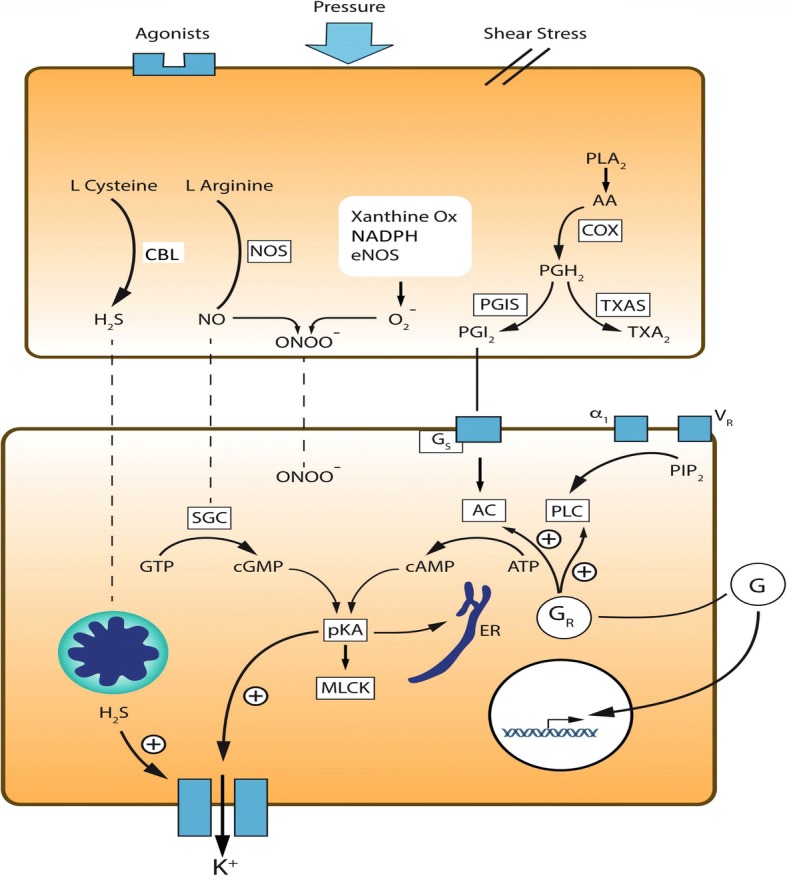Fig. 3.

Endothelial and smooth muscle-mediated mechanisms of vascular dysfunction in shock. Hormonal and mechanical factors drive endothelial cell activation in the vasculature. Increased expression of the inducible isoform of nitric oxide synthase (iNOS) generates increased production of nitric oxide (NO) from arginine. NO directly reduces vascular tone through the activation of soluble guanylate cyclase, which catalyses the conversion of GTP to cyclic GMP. In addition, NO combines with oxygen free radicals (O2−) produced by dyfunctional mitochondria and a number of enzymes, including endothelial nitric oxide synthase (eNOS), NADPH and xanthine oxidase. The synthesised peroxynitrite also directly contributes to smooth muscle relaxation. Hydrogen sulphide (H2S) is synthesised from L-cysteine by cystathionine-β-synthase or cystathionine-γ-lyase (CBL). In shock, H2S reduces vascular tone through inhibition of mitochondrial function and activation of potassium channels. Arachidonic acid is converted to vasoactive prostaglandins via a two-step pathway involving cyclooxygenase (COX) isoforms and prostacyclin synthase (PGIS), which synthesises prostacyclin (PGI2). This in turn drives vasodilatation via the activation of stimulatory G-protein-coupled receptors (Gs), which promotes synthesis of cyclic AMP (AMP) from ATP by adenylate cyclase (AC). Thrombxane A2 (TXA2) is synthesised from the common intermediate PGH2 and plays a role in the regulation of vascular tone in shock states. In the smooth muscle, activation of protein kinase A (PKA) by a number of routes drives smooth muscle relaxation through potassium channel- and endoplasmic reticulum (ER)-mediated hyperpolarization and activation of myosin light chain kinase (MLCK). Glucogorticoids (G) activate glucocorticoid receptors (GR) through both classic and non-classic mechanisms to regulate vascular tone, a process that is impaired in a number of ways in shock. Changes in expression of adrenergic (α1) and vasopressin (VR) receptors and their circulating agonists impair the function of vascular smooth muscle in shock states
